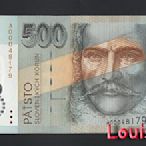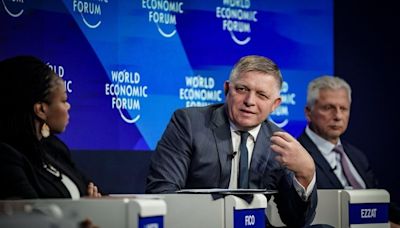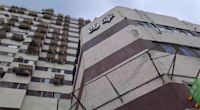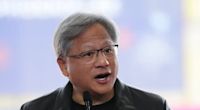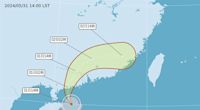斯洛伐克 相關
廣告過去一個月已有 超過 100 萬 位使用者造訪過 booking.com
預訂 您在 酒店 斯洛伐克 網上. 不收預訂費,價格優惠. 地表最強訂房網-Booking.com,超多住宿選擇等你來!
搜尋結果
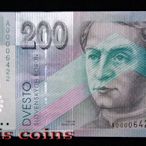 $1800【Louis Coins】B905-SLOVAKIA-2000斯洛伐克紀念紙鈔.200 koruna路易士郵幣社
$1800【Louis Coins】B905-SLOVAKIA-2000斯洛伐克紀念紙鈔.200 koruna路易士郵幣社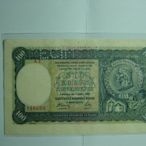 $525斯洛伐克(Slovakia), 100 Korun, 1940年, 全新UNC, 稀少紙鈔!!Y8667882723
$525斯洛伐克(Slovakia), 100 Korun, 1940年, 全新UNC, 稀少紙鈔!!Y8667882723 $420【Louis Coins】B057-CZECHOSLOVAKIA-1998捷克斯洛伐克紀念紙鈔200koruna路易士郵幣社
$420【Louis Coins】B057-CZECHOSLOVAKIA-1998捷克斯洛伐克紀念紙鈔200koruna路易士郵幣社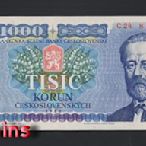 $2800【Louis Coins】B826- CZECHOSLOVAKIA-1985捷克斯洛伐克紙鈔.1000 koruna路易士郵幣社
$2800【Louis Coins】B826- CZECHOSLOVAKIA-1985捷克斯洛伐克紙鈔.1000 koruna路易士郵幣社![【Louis Coins】B755-SLOVAKIA-2000斯洛伐克紀念紙鈔.500 koruna 【Louis Coins】B755-SLOVAKIA-2000斯洛伐克紀念紙鈔.500 koruna]() $1800【Louis Coins】B755-SLOVAKIA-2000斯洛伐克紀念紙鈔.500 koruna路易士郵幣社
$1800【Louis Coins】B755-SLOVAKIA-2000斯洛伐克紀念紙鈔.500 koruna路易士郵幣社![銀幣雙色花園-斯洛伐克年動植物群系列-猞猁-5歐元紀念銅幣 銀幣雙色花園-斯洛伐克年動植物群系列-猞猁-5歐元紀念銅幣]() $892銀幣雙色花園-斯洛伐克年動植物群系列-猞猁-5歐元紀念銅幣桃喜銀幣老物
$892銀幣雙色花園-斯洛伐克年動植物群系列-猞猁-5歐元紀念銅幣桃喜銀幣老物![2022年斯洛伐克藝術-約翰·朗鮑爾和艾利斯·沃塔瓦小全張 2022年斯洛伐克藝術-約翰·朗鮑爾和艾利斯·沃塔瓦小全張]() $5502022年斯洛伐克藝術-約翰·朗鮑爾和艾利斯·沃塔瓦小全張Y7271874335
$5502022年斯洛伐克藝術-約翰·朗鮑爾和艾利斯·沃塔瓦小全張Y7271874335![MINIART 37085 T-34/85 中型戰車捷克斯洛伐克制前期型 MINIART 37085 T-34/85 中型戰車捷克斯洛伐克制前期型]() $2800MINIART 37085 T-34/85 中型戰車捷克斯洛伐克制前期型模力紅
$2800MINIART 37085 T-34/85 中型戰車捷克斯洛伐克制前期型模力紅![二手 斯洛伐克外國信銷郵票100種不同雕刻居多 郵票 紀念 收藏 【漢都館藏】 二手 斯洛伐克外國信銷郵票100種不同雕刻居多 郵票 紀念 收藏 【漢都館藏】]() $552二手 斯洛伐克外國信銷郵票100種不同雕刻居多 郵票 紀念 收藏 【漢都館藏】漢都館藏
$552二手 斯洛伐克外國信銷郵票100種不同雕刻居多 郵票 紀念 收藏 【漢都館藏】漢都館藏![斯洛伐克 JJ ECC802S 電子管 直代12AU7/EC 斯洛伐克 JJ ECC802S 電子管 直代12AU7/EC]() $3030斯洛伐克 JJ ECC802S 電子管 直代12AU7/EC蒐藏家
$3030斯洛伐克 JJ ECC802S 電子管 直代12AU7/EC蒐藏家![郵票斯洛伐克1998年郵票297復活節小本票外國郵票 郵票斯洛伐克1998年郵票297復活節小本票外國郵票]() $210郵票斯洛伐克1998年郵票297復活節小本票外國郵票大灰狼的郵票
$210郵票斯洛伐克1998年郵票297復活節小本票外國郵票大灰狼的郵票![眾信優品 正版模型【免運】鑄造世界 Miniart 37074 135 T-55 捷克斯洛伐克型MX3041 眾信優品 正版模型【免運】鑄造世界 Miniart 37074 135 T-55 捷克斯洛伐克型MX3041]() $2948眾信優品 正版模型【免運】鑄造世界 Miniart 37074 135 T-55 捷克斯洛伐克型MX3041眾信優品
$2948眾信優品 正版模型【免運】鑄造世界 Miniart 37074 135 T-55 捷克斯洛伐克型MX3041眾信優品
Slovakia (/ s l oʊ ˈ v æ k i ə,-ˈ v ɑː k-/ ; Slovak: Slovensko [ˈslɔʋenskɔ] ), officially the Slovak Republic (Slovak: Slovenská republika [ˈslɔʋenskaː ˈrepublika] ), is a landlocked country in Central Europe.It is bordered by Poland to the north, Ukraine to the east, Hungary to the south, Austria to the west, and the Czech Republic to the northwest.
Slovak ( / ˈsloʊvæk, - vɑːk / SLOH-va (h)k; [15] [16] endonym: slovenčina [ˈslɔʋentʂina] or slovenský jazyk [ˈslɔʋenskiː ˈjazik]) is a West Slavic language of the Czech–Slovak group, written in Latin script. [17] It is part of the Indo-European language family, and is one of the Slavic languages, which are part of the larger ...
- Name
- Ethnogenesis
- History
- Culture
- Maps
- Statistics
- Sources
- Further Reading
- External Links
The name Slovak is derived from *Slověninъ, plural *Slověně, the old name of the Slavs (Proglas, around 863).[a] The original stem has been preserved in all Slovak words except the masculine noun; the feminine noun is Slovenka, the adjective is slovenský, the language is slovenčina and the country is Slovensko. The first written mention of adjectiv...
The early Slavs came to the territory of Slovakia in several waves from the 5th and 6th centuries and were organized on a tribal level. Original tribal names are not known due to the lack of written sources before their integration into higher political units. Weakening of tribal consciousness was probably accelerated by Avars, who did not respect ...
Slavs of the Pannonian Basin
The first known Slavic states on the territory of present-day Slovakia were the Empire of Samo and the Principality of Nitra, founded sometime in the 8th century.
Great Moravia
Great Moravia (833 – 902-907) was a Slavic state in the 9th and early 10th centuries, whose creators were the ancestors of the Czechs and Slovaks. Important developments took place at this time, including the mission of Byzantine monks Cyril and Methodius, the development of the Glagolitic alphabet (an early form of the Cyrillic script), and the use of Old Church Slavonicas the official and literary language. Its formation and rich cultural heritage have attracted somewhat more interest since...
Kingdom of Hungary
The territory of present-day Slovakia was split in two parts between the Kingdom of Hungary (under Hungarian rule gradually from 907 to the early 14th century) to Upper Hungary and Royal Hungary (under the Habsburgs from 1527 – 1848 (see also Hungarian Revolution of 1848)) until the formation of Czechoslovakia in 1918. However, according to other historians, from 895 to 902, the whole area of the present-day Slovakia became part of the rising Principality of Hungary, and became (without grada...
The art of Slovakia can be traced back to the Middle Ages, when some of the greatest masterpieces of the country's history were created. Significant figures from this period included the many Old Masters, among them the Master Paul of Levoča and Master MS. More contemporary art can be seen in the shadows of Koloman Sokol, Albín Brunovský, Martin Be...
Slovaks in Vojvodina, Serbia (2002 census)The language spread of Slovak in the United States according to U. S. Census 2000 and other resources interpreted by research of U. S. English Foundation, percentage of home speakersThere are approximately 5.4 million autochthonous Slovaks in Slovakia. Further Slovaks live in the following countries (the list shows estimates of embassies etc. and of associations of Slovaks abroad in the first place, and official data of the countries as of 2000/2001 in the second place). The list stems from Claude Baláž, a Canadian Slovak, the...
Slovaks in Hungary Archived 27 September 2007 at the Wayback MachineBaláž, Claude: Slovenská republika a zahraniční Slováci. 2004, MartinBaláž, Claude: (a series of articles in:) Dilemma. 01/1999 – 05/2003Marsina, Richard (1995). Nové pohľady historickej vedy na slovenské dejiny. I. časť. Najstaršie obdobie slovenských dejín (do prelomu 9.-10. storočia) (in Slovak). Bratislava: Metodické centrum mes...Marsina, Richard (1997). Ethnogenesis of Slovaks, Human Affairs, 7, 1997, 1. Trnava, Slovakia: Faculty of Humanities, University of Trnava.Marsina, Richard (2009). "K problematike etnogenézy Slovákov a ich pomenovania". In Marsina, Richard; Mulík, Peter (eds.). Etnogenéza Slovákov (in Slovak). Martin: Matica slovenská. ISBN 978-80-709...Marek, Miloš (2009). Národnosti Uhorska [Nationalities in the Kingdom of Hungary] (in Slovak). Trnava: University of Trnava. ISBN 978-80-8082-470-9.Bratislava (/ ˌ b r æ t ɪ ˈ s l ɑː v ə / BRAT-iss-LAH-və, US also / ˌ b r ɑː t-/ BRAHT-, Slovak: [ˈbracislaʋa] ; Hungarian: Pozsony ), historically known as Pressburg (or Preßburg, German pronunciation: [ˈpʁɛsbʊʁk]; Slovak: Prešporok), is the capital and largest city of Slovakia and the fourth largest of all cities on Danube river.
Bratislava, the capital of Slovakia, is also the country's most visited city Tourism in Slovakia offers natural landscapes, mountains, caves, medieval castles and towns, folk architecture, spas and ski resorts.More than 5.0 million people visited Slovakia in 2017, and the most attractive destinations are the capital of Bratislava and the High Tatras.
The COVID-19 pandemic in Slovakia has resulted in 1,877,741[1] confirmed cases of COVID-19 and 21,226[1] deaths. The virus was confirmed to have spread to Slovakia on 6 March 2020 when Prime Minister Peter Pellegrini announced that a 52-year-old man was infected.[3] He had not travelled anywhere but his son had travelled to Venice in Italy ...
St. Elisabeth's Cathedral in Košice Religion in Slovakia is predominantly Christianity, adhered to by about 68.8% of the population in 2021. Catholicism is the major Christian tradition in the country, followed in 2021 by 59.8% of the population, a majority of whom (55.8%) were of the Roman Catholic Church and a minority of whom (4%) were of the Slovak Greek Catholic Church.
